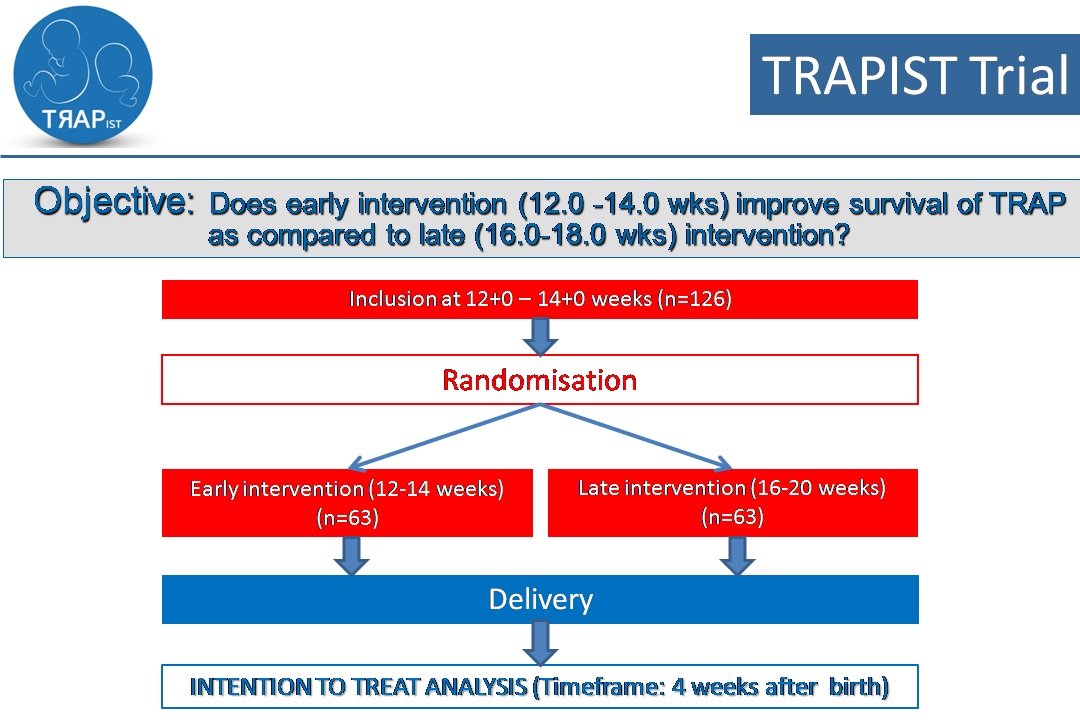Twin Reversed Arterial Perfusion Intervention STudy (TRAPIST)
On this page:
The study main question is whether early intervention (12-14 weeks gestation) improves the survival and the 2-year development of the children compared to late intervention (16-18 weeks gestation) in twin pregnancies complicated by twin reversed arterial perfusion sequence (TRAP). \nTRAP sequence is a complication of a shared circulation in monochorionic twins (share a single placenta), where there is reversed blood flow from the healthy twin (pump twin) towards the abnormal twin. The reverse flow strains the heart of the pump twin and can increase urine output, which can trigger premature birth.\nTRAP is now routinely diagnosed at the 12th week routine ultrasound scan, but treatment has not traditionally been offered until the 16th week. An intervention before that time has been shown with studies of a similar procedure (amniocentesis) to carry a higher risk of membrane rupture and miscarriage. In some cases the reversed blood flow stops by itself, and intervention planned at 16 weeks is not required. However it has also been shown that diagnosis at 12 weeks with treatment delayed until the 16th week is associated with a high pregnancy loss (up to 33%) of the pump twin.
Previous studies have also shown that earlier treatment usually results in delivery closer to the expected date of delivery (less risk of prematurity) with improved survival of the baby.\nTo find this out, we need to put people into groups and give each group a different treatment. The results can then be compared to see if one is better than the other. To try to make sure the groups are the same to start with, each patient is put, by a chance using the computer (randomly),.into either the early group, receiving treatment between 12 and 14 weeks or late group, receiving treatment between 16 and 18 weeks.
Twin Reversed Arterial Perfusion Intervention STudy (TRAPIST)


